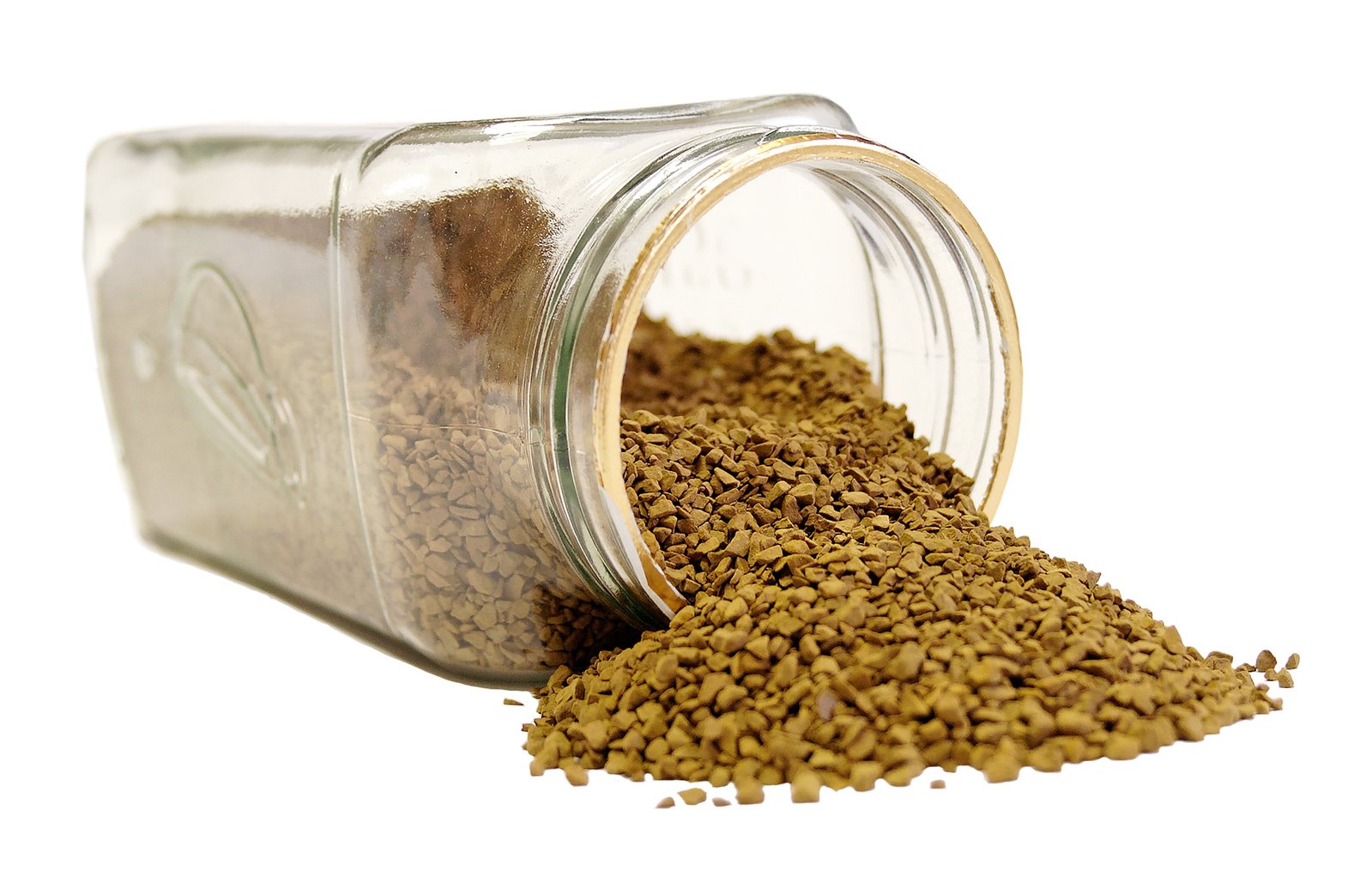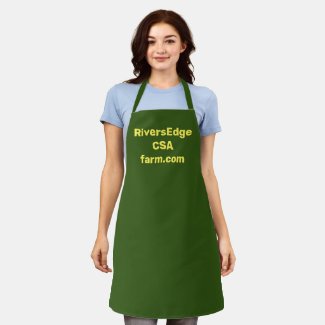Freeze drying your crops: Is this value-added option for you?
by Barbara Berst Adams. Copyright National Lilac Publishing A version of this article first appeared in AcresUSA.

When the organic medicinal herbs and other healing crops of Sandy, Oregon’s 90-acre Eclectic Institute farm are harvested, many of them are turned into value-added products using the freeze-drying preservation method. In some cases they offer bottled, encapsulated, single freeze-dried crops, such as nettle, echinacea, or beet juice. They also mix crops into formulas with names such as “Liver and Gallbladder Support,” or “Immune Support.”
On the other side of the country in New England, Shen Blossom, LLC owned by Brandon Amalani who is in partnership with Pioneer Valley Naturals, grows schizandra berries on 50 certified organic acres. Schizandra berries are known in Traditional Chinese Medicine as being exceptional adaptogenic fruits. Some of the berries grown by the partners are processed into freeze-dried schizandra powder which the growers either sell direct to consumers or to private labels, practitioners, formulators and wholesalers.
Both
growers state there are qualities, including excellent retention of the
crops’ health benefits, that freeze-drying is remarkable at providing.
Across the US, independent farms and farming partnerships include freeze-drying with their value added offerings. But the process isn’t for everyone. We’ll explore freeze-drying from micro sized operations to those who supply world industry quantities, to help readers decide if it’s something they may want to consider.
Many crops can be freeze dried, including blueberries, products from your organic dairy, medicinal and culinary mushrooms and even cooked value-added products such as pumpkin pie filling. Freeze-drying starts with an initial freezing of the crops. Then a special vacuum chamber allows the frozen water inside the crop to go from solid ice directly to vapor without high heat and without first returning to liquid. This process is called sublimation. It works because the ice needs very low temperatures to evaporate and water can’t exist as a liquid in a vacuum. During this process the cell structure reportedly remains in tact. This initial freezing of the crops often takes place separately outside the vacuum chamber before the frozen crops are placed inside (this happens most often in the larger quantity freeze-drying operations) or in some cases of smaller homesteading sized freeze-driers, fresh unfrozen products are initially frozen within the chamber itself.
The freeze-drying process leaves behind a crispy dried food or crop that can still retain its original flavor, aroma, color (without adding other substances to retain the color), shape and many of the nutrients. There are differing reports regarding whether “many” “most” or “all” of the nutrients are retained, which most likely partially depends on the type of product being freeze-dried, but most agree that freeze-drying maintains a substantial amount of nutrients without shrinking or toughening the food product. In fact, probiotics can be freeze-dried and become activated again, and foods preserved this way are considered still raw, because during the gentle warming process after the initial freezing when sublimation takes place, the reported temperatures remain below the 118F degree standard temperature needed to remain raw, and in some cases the temperatures are far less.
In conventional dehydrating, though the heat is also gentle (such as around 125F degrees or so), it goes above the standard 118F degrees. If conventional dehydration lowers its temperatures for the purpose of retaining the raw value, then the drying time may have to be extended too long, possibly resulting in mold or other deterioration before dehydration is complete. Some people who utilize conventional dehydration get around this by initially turning the heat up close to 145F degrees only for the first couple of hours which is believed to speed up the process but not make the food itself actually reach that temperature in that short amount of time. Then they dial down the temperature to around 105F degrees for the remainder of the drying process. The trade-off with freeze-drying is that unlike conventional dehydration, an initial freeze is required, but no special steps are needed to avoid the 118F degree mark.
Once
a food product’s moisture is properly removed by sublimation, it can
become room temperature shelf stable for many years -- reports of 10 to
30 years or more depending on the food product, as long as it’s kept in
containers that keep out moisture and oxygen. Some foods, though, such
as certain fruits, have shelf lives reported to closer to two years. As
the USDA’s Food Safety and Inspection Service describes, “To
use freeze-dried foods, they must be rehydrated with water. They retain
their original flavor, texture, and nutrients, but must be packaged in
moisture-proof, hermetically sealed containers.”
In general, many freeze-dried foods are rehydrated before consumption, although encapsulated herbal supplements ready to swallow, and freeze-dried berries meant to eat as crunchy snacks or sprinkled onto cold cereal are examples of those that aren’t. And as mentioned, it isn’t just medicinal crops that are freeze-dried. Meat, raw or cooked eggs from your pastured chickens, cheese and other dairy (including ice cream) along with vegetables, fruits and whole meals can be freeze-dried. There are even freeze-drying services that preserve wedding flowers. To get an idea of what’s already out there as far as national brands, Andy Pressman, Agriculture Specialist for the ATTRA Project, which is operated by the National Center for Appropriate Technology under a grant from the Rural Business-Cooperative Service, U.S. Department of Agriculture offered the following companies. All of these have easy-to-navigate websites. Nothing But Snack Company (nothingbutsnack.com.) Karen’s Naturals (shopkarensnaturals.com), Sensible Foods (sensiblefoods.com), and Harmony House Foods (harmonyhousefoods.com).
How it all started
It appears reliable methods for freeze-drying were developed during World War II to find a way to preserve donated blood and vaccines. “We started freeze-drying after our naturopathic physician founder got interested in the technology and its medical applications after learning about how plasma could be freeze-dried, stored and then put back into the body,” said Christine Alstat of Eclectic Institute. “He wondered how this would apply to preserving the properties of medicinal plants and started experimenting with it.” Dr. Ed Alstat, founder of Eclectic Institute, was successfully using the freeze-drying method with crops by around 1988. Eventually freeze-drying became more of a staple of the food industry.
Potential Markets
Freeze-dried
food crops compete with and complement other forms of non-perishable or
less perishable products that can survive out of refrigeration for an
extended time. Here are some market categories that may be interested.
Preparedness: The preparedness, or preppers group includes people who, for personal or religious reasons, keep themselves and their families stocked up heavily for future food needs in case regular food sources diminish or become scarce for a long period, such as many months or even a year or more. They can be eager customers for freeze-dried products. However, there are already long-established producers filling those markets. A potential freeze-dried producer could look into these markets and producers, get to know some of the customers, and see if there are any gaps to fill, such as a different food crop not offered or a locally grown and processed product. Since freeze-drying allows preserving of prepared meals such as scrambled eggs and even ice cream, it allows the possibility of a farm’s signature recipe prepared entree or dessert to be freeze-dried for sale.
Filling the pantry: This overlaps the above market and includes people who like to stock up their room temperature pantry with various home or farm grown preserved goods for the flavor, health, and peace of mind over the winter, which might include the occasional shorter term power outage or icy roads making grocery store shopping difficult. While it’s a tradition leftover from earlier agrarian societies where stocked grocery stores weren’t around every corner year-round, COVID-19 helped it make a comeback along with those who simply want to prepare more meals at home all year, and need something to fill the gap between seasonal fresh farmers’ markets. Market outlets besides direct individual sales could include offering freeze-dried products via a CSA -- either one’s own or in cooperation with others who produce different kinds of storage crops.
For those who produce large quantities of freeze-dried products, one good example of farm product marketing is found in the state of Oregon. It holds various Fill Your Pantry days in autumn where customers purchase a minimum amount of non-perishable products from farmers, usually pre-ordered and distributed on a single day. If there is not such a program already established near a freeze-dried producer, other non-perishable crop growers (grain growers, storage apple orchardists, etc.) could coordinate one together, possibly soliciting the assistance of the nearest farmers’ market organizer for help in generating customers and organizing pre-payments. Though current Fill Your Pantry events usually call for a minimum order of 100 pounds, the light weight of freeze-dried products could use a different type of minimum system.
Freeze-dry foodies: There are those who like freeze-dried just for the sake of freeze-dried. The resulting product is lightweight and easy to transport. Crispy freeze-dried strawberries are great in granola mixes. Organic freeze-dried fruit and vegetable powders add health, flavor and color to smoothies. And it’s fun to “just add water” and see a meal appear before your eyes. This market may include campers and hikers, the traveling market (restrictions on transporting across borders needs to be taken into consideration), college students, and the raw food market, as well as parents who want novel, healthy and delicious foods to send with their kids’ school lunches.
Advantages and disadvantages over other types of food preserving
Here
are some pros and cons to think about when considering if freeze-drying
might be a viable value-added method for you. The process obviously
takes consistent electricity. Afterwards, specific moisture proof and
oxygen-free storage containers, such as vacuum sealed jars or air-tight
containers with oxygen absorption packets, must be used to maintain the
shelf-life. Once complete, though, the containers need no freezers,
refrigerators, nor root cellars. If sealed properly in mylar bags, the
products can be very lightweight and easy to mail where it’s legal to
mail the food product.
Freeze-drying equipment -- can this be a very small scale or on-farm project for a single independent farm?
The
size and elaboration of the equipment needed for freeze-drying, and its
need for ongoing electricity and to be sheltered within protective
structures, plus the noise the process makes, often deems it a process
farmers contract out, cooperate with other farmers in a separate
building, or at least are very careful and thoughtful with cost
projections and market reception before investing in such a project as
an on-farm facility.
There are, however, countertop freeze-drying units discussed below which might possibly serve to test the results and customer reactions of freeze-dried products, or even add a bit to sales for certain smaller market gardeners.
But for larger scale production, both farm-owned and third party processing have worked satisfactorily for different farms,
depending on their goals and crops. Eclectic Institute owns their own
facility about 12 miles away. “Our farm is located in Sandy and our
freeze-drying facility is located very close by in Gresham,” said
Christine Alstat. “We have two large scale freeze-driers in the
building. We harvest the herbs, clean them, freeze them in our own
freezer, and then put them into the freeze-drier. The freezer and
freeze-driers are beside each other in the same facility. Our company is
vertically integrated and we do it all ourselves. For some of our herbs
that don’t grow in the Oregon climate such as turmeric and ginger, we
contract with an organic farm in Hawaii, and have them grow, clean, and
then freeze it for us and sent to us frozen and it then goes directly
into our freeze-driers.”
In the case of Shen Blossom, LLC, the schizandra berries are dried third party by Van Drunen Farms, a company with valuable qualities Brandon Amalani of Shen Blossom describes as “certified organic, CGMP compliant, and kosher certified. Our berry powder is never co-mingled with any other products or substances.” (CGMP refers to Current Good Manufacturing Practice regulations.)
Learning more about the process and its sales regulations
Unlike other forms of food preserving, Andy Pressman agreed with me that at this writing there appears to be less non commercial information for the farmer new to freeze-drying who wants more direct or online tutorials about the process. Some companies that either sell or rent the units offer video guides or on-site education. Youtube also offers various demonstrations. But Pressman stated that along with connecting with other approachable farmers near you already involved in freeze-dried products, the best starting source for now would be your state Department of Agriculture and local Cooperative Extension Services. Especially since all states’ regulations are different and update often. Let them know your plans and your target market, including if you plan to sell out of state. Contact information for your local Cooperative Extension Office can often be found in your phone book’s local government pages under Cooperative Extension Service or Ag Extension Office. You can also find your own state and local contact information online. Pressman offered the following, “Here is a link to an extension directory: https://nifa.usda.gov/partners-and-extension-map?state=All&type=Extension . I also believe you can locate local offices through the eXtension website: https://extension.org/. “If you are not familiar with eXtension,” he said, “it is an online resource that brings together information from all state extension services. They also have a site specifically for organics: http://eorganic.info/.”
Regarding food safety regulations, for very small operations, some states were revising their regulations to allow more leniency for cottage food producers and micro farming enterprises. But COVID-19 may cause changes either way. Tighter regulations may be deemed necessary. On the other hand, it may appear valuable to encourage even more local cottage food suppliers than previously without the burden of too much bureaucracy, allowing producers to be trusted to comply with understandings of updated hygene methods.
There
are numerous steps from field to packaged freeze-dried product where
legal regulations need to be understood and followed for each person’s
region. This may include finding out if a food handler’s permit is
needed for preparing your produce for freeze-drying, such as when
slicing pears or sorting beans. Find out if the preparation requires a
certified kitchen, if any on-farm freeze-drying equipment will need
regular inspecting or specific cleanliness applications, and what
requirements exist for packaging freeze-dried products for sale.
Renting/leasing larger freeze-drying equipment or facilities on or off the farm
Renting
freeze-drying equipment for the farm, or in cooperation with other
nearby farms, or instead renting space at others’ facilities can be an
option for those not wanting to purchase equipment but still preferring
to be involved in the labor of their own freeze-drying.
Hudson Valley Lyomac in Hudson, New York, for example, sells, rents out and leases out freeze-drying equipment. The company also allows producers to use their company’s freeze-drying facility at Hudson Valley Lyomac’s own location. In that case, the company offers the options of operating the equipment yourself, having them do it for you, as well as training you directly with the equipment.
Some
of the larger contract freeze-drying operations will only take in
products already properly frozen at other facilities, so growers should
check with any freeze-drying facility they may want to use as to what
preparations must be made upfront before bringing in their crops, such
as whether the facility has the capacity to freeze the crops or if they
must come in frozen. Thomas Finck of Hudson Valley Lyomac stated, “We
have blast freezers here that go down to -80C/-112F.”
When searching for a nearby freeze-drying facility, keep in mind that some farmers or food producers that own their own freeze-drying equipment may also contract freeze-dry for others, even if that service is only a minor part of everything else they offer. Glenn’s Market and Catering, of Watertown Wisconsin, for example, is a retail meat market offering meats, cheeses and deli items at its store, along with catering services. The company also operates a freeze-drying segment for their own products such as pet food and freeze-dried chicken feet. Glenn’s Market will custom freeze-dry others’ products at a 300 pound minimum. They informed me they can freeze the crops also, so they don’t have to arrive already frozen.
Though freeze-drying facilities aren’t as readily available as rentals through county extension agencies as are certified kitchens and other farm equipment, still, you may want to see if one is available or may be available soon in your area. “We have identified it as a priority need for farmers,” said Andy Pressman regarding his own County Conservation District in Cheshire County, NH.
Purchasing equipment for the farm or for a cooperative of farms
American Freeze-dry, which started as a blueberry farm
in Washington State and now distributes food products in the name of
Awesome Food Distribution, Inc., states they coordinated with other
neighboring farms to create a freeze-dried food enterprise where the
berries are first flash frozen, then transported to their own
freeze-drying facility. Their products now include freeze-dried
blueberry, blackberry, cranberry, pomegranate, and strawberry powders.
Eclectic Institute as mentioned above also owns and operates their own
freeze-drying equipment and facility.
An advantage to an on-farm or near farm freeze-drying facility is being able to offer plants picked fresh from the field that go directly into freeze-drying with less handling and transportation in between. Cost, of course, can be prohibitive. But there is a chance funding might be available for some according to Pressman. “I think one of your best bets would be to fund equipment and trainings through a grant, such as Specialty Crop Block Grants which are administered through State Departments of Agriculture,” he said. “I’ve had a few processing-type grants funded through this program which not only provide the equipment, but also covers costs for providing education and trainings.”
Though
on-farm or even cooperative larger-scale farmer owned freeze-drying
facilities have succeeded for some, others have thoroughly looked into
the possibility and ultimately chose against it. Persimmon Hill Farm is a
berry, fruit and mushroom farm in southwestern Missouri. Owners Earnie
& Martha Bohner not only transform their crops into specialty and
gourmet value-added products such as sauces and jams, they’ve also added
an on-farm restaurant and bakery. Earnie told me they ultimately chose
not to add freeze-dried products for a variety of reasons, and the story
of their particular situation at the time may prove valuable to those
considering a larger scale on-farm or near-farm freeze-drying project.
Their further story is here:
https://www.sare.org/Learning-Center/Bulletins/Marketing-Strategies-for-Farmers-and-Ranchers/Text-Version/Evaluating-New-Farm-Enterprises
Contract freeze drying with the largest companies
Five
of the largest contract freeze-drying companies in the USA include
Mercer Foods, Oregon Freeze-Dry, Van Drunen Farms, Freeze-Dry Foods, and
Chaucer Foods. They process enormous quantities of products year round,
and for the most part, they may not even bother with fresh products or
dealing with come and go harvest seasons. Instead, crops come from
separate frozen food processing plants so the freeze-drying companies
can focus on the final sublimation segment.
Here’s how Mike Alaga of Mercer Foods explained to me why this is the case with Mercer, “The US, Europe and most the world have a well-developed frozen food distribution system in place (already) which frees our industry from the harvest cycle. We freeze-dry strawberries and corn 363 days a year and this is something we could not do if we worked with fresh product.” He explained that farmers interested in freeze-drying their crops with these types of facilities need to “have access to nearby frozen food processing plants that can prepare what the farms produce into finished products we can dry.”
However,
there can still be some flexibility with some of the larger companies.
Todd Bevan of Van Drunen Farms, one of the five mentioned above, stated
their company prefers pre-frozen products, but that there could be
exceptions. “Typically, if we’re going to custom freeze-dry a product,
then it needs to be frozen,” he said. “That’s the preferred method. That
said, we are able to bring in fresh product, freeze it, and then
freeze-dry it if the volumes justify it. (However), the easiest is
definitely to send in frozen diced products.”
Shen Blossom, LLC, which uses Van Drunen Farms freeze-drying services, chooses to freeze their schizandra berries ahead of time for practical harvesting and financial reasons. “Since we harvest so much within a four to five week window, we do have to deep freeze most of it as it would cost too much at once to freeze-dry all of it,” said Brandon Amalani, “So we (then) freeze-dry it batch by batch based on what we need to guarantee the freshest schizandra powder available anywhere.”
The
farmers mentioned here, and others, who successfully process and sell
freeze dried products have carefully considered their own unique crops,
location and target markets to create a freeze-drying method that works
for them. In many cases, their freeze dried products are added as a
choice for customers who can choose from their other forms of crop
preservation, such as the liquid extracts also offered by Eclectic
Institute and Shen Blossom. There are many pros and cons, but for some,
freeze drying may be worth looking into, or at least keeping an eye on,
as it evolves and improves over the years.
----
Countertop freeze drying
In rare cases, a family-sized freeze-drier may be useful beyond the family’s own use when considering sales of freeze-dried goods. They may serve to offer a few quarts to their customers to get market feedback on whether they'd like to freeze dry at a larger scale. Keep in mind, though, these units can cost between $4000 and $10,000. Electricity cost must be factored in. And they make enough noise (some describe the noise as similar to a vacuum cleaner) to where owners wouldn’t want one in their kitchen or near other living areas.
Laurie Neverman is the author of the site, Common Sense Homesteading. Experienced at many forms of food preservation, she uses and now sells through affiliate, an at-home freeze-drier (Harvest Right brand) for family use, with plans to expand her own use of it into making extra for gifts, though not for products to sell. “I’ve freeze-dried fruit, veggies, cooked meats, and precooked meals,” she told me.
The drier she uses has four trays to fill with crops or foods to be processed. “Food should be roughly no more than level with the trays,” she said, “a maximum of 10 pounds before freeze-drying per batch, more like six pounds if it’s a high moisture item. During the freeze-drying process, ice builds up on the interior walls of the unit. Too much food equals too much ice, and the unit can’t operate correctly.
“Each tray holds roughly one quart,” she told me. “The volume of the product does not decrease significantly during processing, unlike dehydrating.”
Unlike larger commercial freeze-drying equipment, this machine both freezes and dries the fresh food put inside in one seamless operation, which means the quantity produced can be very small if depending on the unit for freezing also. That can be a problem when wanting as large an amount as possible from a crop that ripens in a short time frame. Here are Neverman’s thoughts on that: “If one was considering producing product to sell, I’d highly recommend an additional set of drying trays,” she said. “These can be used to freeze food ahead in a conventional freezer, which can cut processing time in the freeze-drier. You could pre-freeze one load while processing another.” And as mentioned in the main article, even the larger producer, Shen Blossom, deep freezes most of the berries upfront at harvest time, then freeze dries smaller batches as needed throughout the year.
For the desperately curious who want to know what a handful of their tomatoes, shiitake mushrooms, or heirloom melon slices taste like freeze-dried, yet don’t want to invest in an at-home unit, Youtube periodically has make-shift at-home freeze-drying instructions including how to use a regular home deep freezer along with a canning jar vacuum sealer in a very specific way, with instructions on how to test the resulting product to see if it properly freeze-dried this way. Such videos come and go, but try Youtube searches such as, “at-home freeze-drying.” These searches may also lead to various people’s home videos on using the smaller commercial freeze driers such as the one described above, who have obtained them and are now selling the units through affiliation, so keep that in mind. There are also videos for the mechanically inclined on building one’s own more elaborate at-home freeze-drier.














